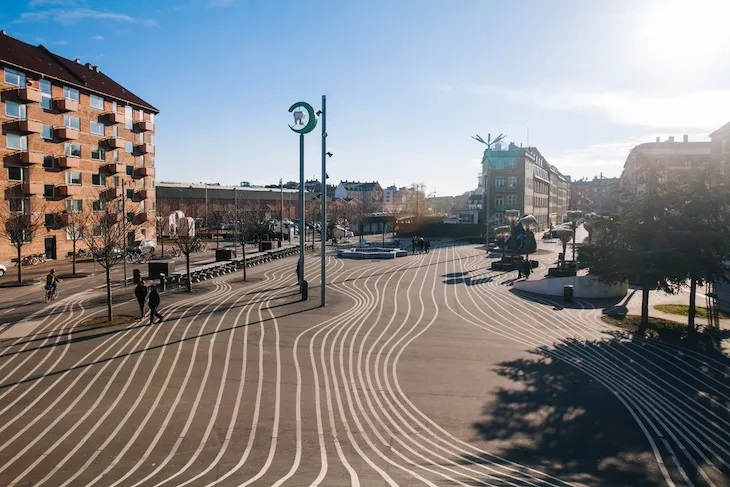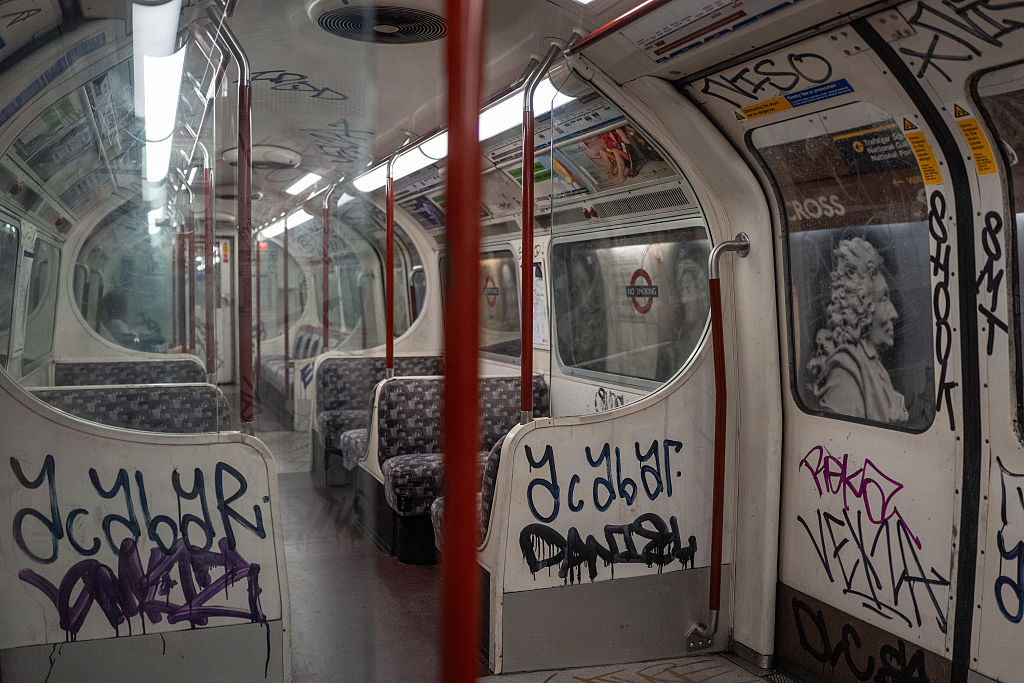Nørrebro, Copenhagen’s hip, multicultural inner-city area, was crowned the world’s coolest neighborhood by Time Out in 2021. Former residents include Denmark’s greatest living film star Mads Mikkelsen. If you’ve viewed Nordic noir TV dramas depicting the nexus of hip urbanism and the tribulations of mass migration, you’ll have seen plenty of Nørrebro (sometimes called “Nørrebronx” in tribute to the formerly dangerous region of New York City).
Denmark has adopted a zero net-migration target
The murder location in season two of The Killing? Nørrebro. Mohammed and Saif’s grocery shop in The Bridge? Blågårdsgade in Nørrebro. The café where fictional Danish prime minister Birgitte Nyborg meets her son in Borgen? Tjili Pop in Nørrebro. Unfortunately, Nørrebro no longer features in the Time Out cool neighborhood rankings. Instead, a Nørrebro social housing project, Mjølnerparken, is the key location in a legal battle between the Danish government and the European Union which is playing out at the European Court of Justice (ECJ) in Luxembourg.
Mjølnerparken, deemed a “parallel society” by Denmark’s Social and Housing Ministry, is home to nearly a thousand people, 87 percent of whom are “non-western” immigrants (in the Danish government’s taxonomy) or their descendants. A dozen Mjølnerparken residents and their supporters are seeking an ECJ ruling on the government’s use of the use of the apparently dog-whistle term “non-western.” “Non-western” is not based on geography, with people from non-EU countries in the Balkans and eastern Europe included in the grouping. The Mjølnerparken residents argue the use of this term breaches the EU’s anti-race discrimination laws.
The underlying issue is that Mjølnerparken residents and their supporters are furious at Denmark’s 2018 so-called “ghetto package” laws, which seek to integrate such “non-western” migrants by breaking up their residential clusters, and aim to force gentrification by capping social housing stock at a maximum of 40 percent of the housing total of an area. There will be no shortage of takers for the newly-privatized homes: Nørrebro is still cool, and Mjølnerparken is an eight-minute walk from Copenhagen’s excellent underground metro system.
It is tempting to have sympathy for the Mjølnerparken residents, who are mostly recent Muslim immigrants to Denmark. After all, “chain migration” — whereby immigrants from a particular region follow friends or relatives — is a normal feature of migration patterns, and indeed was heavily practised by the Danes themselves in the nineteenth century, when Danish dairy farmers moved to US states such Minnesota and Wisconsin. But Danish migrants to the US were rapidly assimilated: there are approximately 1.3 million Americans of Danish descent, but only around 30,000 remaining Danish speakers. The Danish government’s position is that this trend is not occurring naturally for “non-western” immigrants in Denmark today.
Denmark may well lose its case at the ECJ. But the question is this: would a ruling against the Danish government at the ECJ make much difference? Denmark’s Social Democrat prime minister, Mette Frederiksen, has successfully employed tough migration policies to retain power, mostly by stealing the political clothes of parties far to the right of hers — in particular the nationalist Danish People’s Party, whose vote share collapsed from 21 percent in 2015 to 2.6 percent in 2022. Frederiksen has a popular political mandate to enact a different set of pro-integration rules if she wishes.
In recent years, Denmark has adopted a zero net-migration target; has had a Rwanda asylum processing policy (currently “on hold”); and regularly publishes statistics that justify its policies — including demonstrating that non-western immigrants make a net negative financial contribution to the Danish economy, and that violent crime convictions for immigrants from certain Middle Eastern countries are over seven times the Danish average.
Meanwhile, failed asylum-seekers who cannot be deported may end up isolated at Sjælsmark Detention Center, an amenity-light location some two hours from Copenhagen by bus or train described as “social death” by its critics. Even legal migration to Denmark from outside the EU requires a minimum salary of $55,000. Most importantly, Frederiksen can reasonably claim her pro-integration policies are working, since a record 64 percent of first and second-generation “non-western” immigrants are now in employment.
A ruling against Denmark at the ECJ may add to the Danish public’s mild Euroskepticism but is unlikely to change its anti-immigration views — or the policy of a government which cleverly walks the tightrope of touting the comforts of “hygge” to rich tourists who descend upon Copenhagen for its hip restaurant scene, while simultaneously operating among the world’s least welcoming policies on migration.
Other EU leaders, their mandates collapsing with the rise of far-right populist parties in their own countries, can surely only envy Frederiksen’s success in neutering Denmark’s far-right by adopting their anti-migration policies.
This article was originally published on The Spectator’s UK website.

























